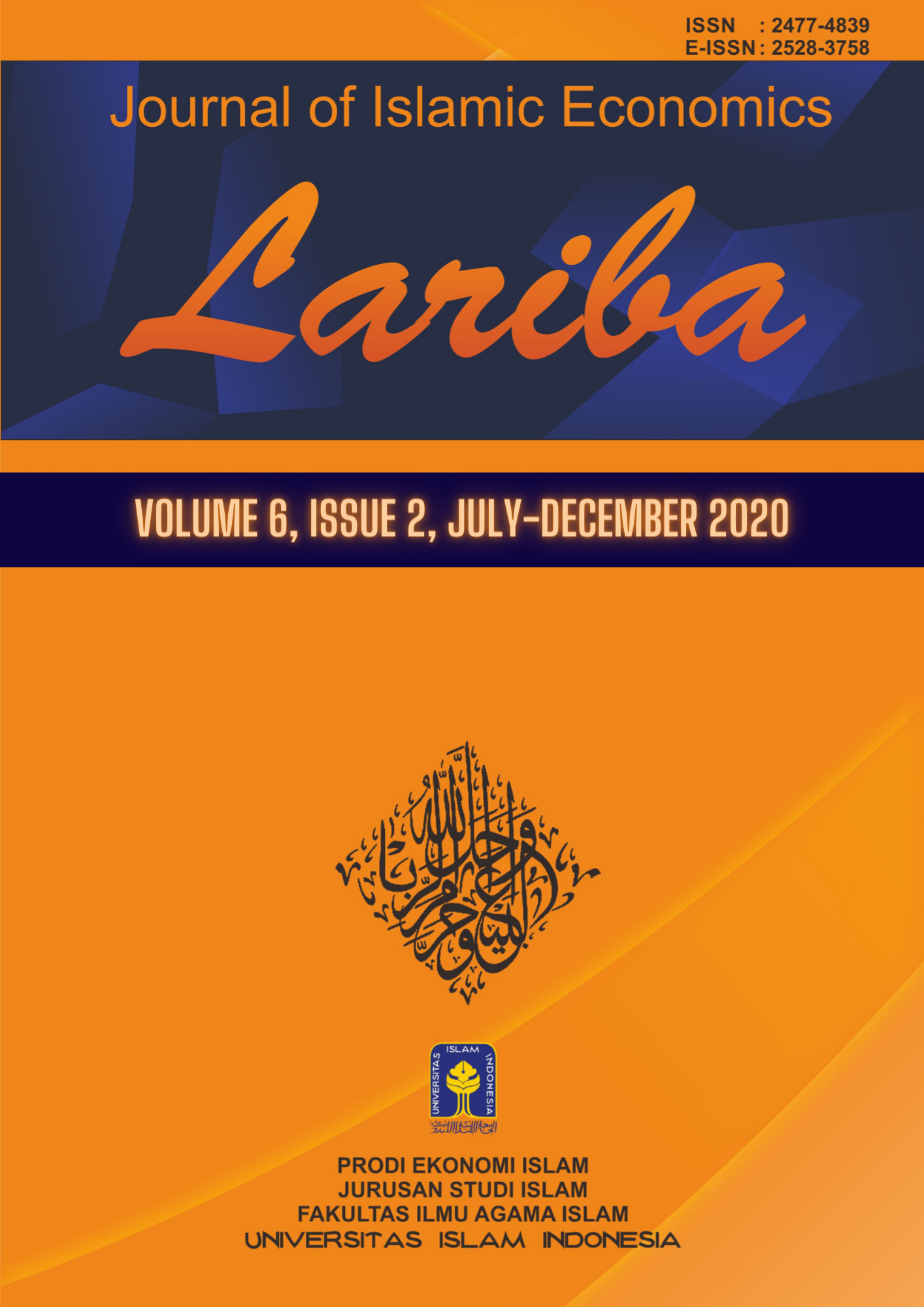Main Article Content
Abstract
The purpose of this research is to analyze (1) difference of stock liquidity level before and after stock split (2) difference of Price Earning Ratio (PER) before and after stock split. The population used in this study are all companies listed on the Indonesia Stock Exchange. While the sample selection is taken by using purposive sampling method. The number of samples used by researchers are 62 companies listed on the Indonesia Stock Exchange and stock split in the period 2009-2016. Based on the results of research indicate that there is a significant difference in Price Earning Ratio (PER), either before stock split or Price Earning Ratio (PER) after stock split. With paired sample t-test results obtained t test with t count> t table (3.912> 2,000) can be concluded then Ho accepted means there is a difference between price earnings ratio (PER) of each sample company, either before stock split or price Earnings ratio (PER) after the stock split event. With paired sample t-test obtained t test results with t count> t table (1,844> 2,000) can be concluded then Ho accepted means there is no difference between the stock liquidity of each sample company, either before the stock split and the liquidity of stock after the event Stock split.
Article Details
Authors who publish with this journal agree to the following terms:
- Authors retain copyright and grant the journal right of first publication with the work simultaneously licensed under a Creative Commons Attribution License that allows others to share the work with an acknowledgement of the work's authorship and initial publication in this journal.
- Authors are able to enter into separate, additional contractual arrangements for the non-exclusive distribution of the journal's published version of the work (e.g., post it to an institutional repository or publish it in a book), with an acknowledgement of its initial publication in this journal.
- Authors are permitted and encouraged to post their work online (e.g., in institutional repositories or on their website) prior to and during the submission process, as it can lead to productive exchanges, as well as earlier and greater citation of published work (See The Effect of Open Access).
References
- Anggraini, Wahyu, danJogiyanto HM, 2000, PenelitiantentangInformasiLabadan Dividend Kas yang dibawaolehPengumumanPemecahanSaham. JurnalBisnisdanAkuntansi Vol. 2 No. 1, April 2000.
- Arisona, V. F. 2013. Faktor-faktor yang mempengaruhi price earning ratio padaindekslq 45 di bursa efekindonesia. JurnalIlmuManajemen 1 (1).
- EwijayadanNurIndriantoro (1999), AnalisisPengaruhPemecahanSahamterhadapPerubahanHargaSaham.JurnalRisetAkuntasi Indonesia.
- Gitman, Lawrence J, 2006, Principles of Managerial Finance (11th ed.), Boston: Addison Wesley
- Hadi, Nur, 2013. Pasar Modal. Yogyakarta :GrahaIlmu
- Indonesia, UndangundangPasar Modal. Undang-Undang N0o.8 Tahun 1995. LN. No. 64 Tahun 1995, TLN No. 3608.
- Investment Analysis and Management (Fifth Edition). New York : John Jones, Charles P (1996). Wiley and Sons Inc.
- Keown, Arthur J, John D. Martin, William J. Petty & David F. Scott Jr. 2005. Financial Management, Principal and Applications.Prentice Hall.
- Margaretha, Farah dan Irma Damayanti. 2008. Pengaruh Price Eraninmg Ratio, Dividend Yield dan Market To Book Ratio Terhadap Stock Return di Bursa Efek Indonesia. JurnalBisnisdanAkuntansi, 10(3), h: 149-160.
- Miliasih, Retno. (2000). AnalisisPengaruh Stock Split Terhadap Earning PerShare,JurnalBisnisdanAkuntansi.Universitas Gajah Mada.Vol.2,no.2, 131-144.
- Ross, A.S., R.W. Westeaterfield and J. Juffe (1999), Corporate Finance (fifth Edition).Boston :Irwan.Mc-Graw-Hill
- Santoto.Singgih (2000), BukulatihanSPSS StatistikParametik, Jakarta : PT. Alex Media Komputindo.
- Sartono, Agus. 2006. ManajemenKeuanganTeoridanAplikasi.EdisiKetiga. Yogyakarta: BPFE-Yogyakarta
- Sunariyah. 2011. PengantarPengetahuanPasar Modal, EdisikeKeenamt. Yogyakarta : Unit PenerbitdanPercetakan AMP YKPN.
- Sutrisno. 2003.ManajemenKeuanganTeori, Konsep, danAplikasi., Yogyakarta : Ekonosia
- Vintarium, Danty. 2011. AnalisisPerbedaan Bid Ask Spread dan Trading Volume Activity SebelumdanSesudah Stock Split pada Perusahaan Manufaktur di BEI Periode 2005-2010. Skripsiditerbitkan. Riau: Universitas Riau.
- Wira, Desmond (2015), MemulaiInvestasiSaham : Exceed
- Weston, J.F dan Brigham. 1994. DasarManagemenKeuangan. Jakarta: Erlangga.
- http://www.idx.co.id
- http://finance.yahoo.com
- http://sahamok.com
References
Anggraini, Wahyu, danJogiyanto HM, 2000, PenelitiantentangInformasiLabadan Dividend Kas yang dibawaolehPengumumanPemecahanSaham. JurnalBisnisdanAkuntansi Vol. 2 No. 1, April 2000.
Arisona, V. F. 2013. Faktor-faktor yang mempengaruhi price earning ratio padaindekslq 45 di bursa efekindonesia. JurnalIlmuManajemen 1 (1).
EwijayadanNurIndriantoro (1999), AnalisisPengaruhPemecahanSahamterhadapPerubahanHargaSaham.JurnalRisetAkuntasi Indonesia.
Gitman, Lawrence J, 2006, Principles of Managerial Finance (11th ed.), Boston: Addison Wesley
Hadi, Nur, 2013. Pasar Modal. Yogyakarta :GrahaIlmu
Indonesia, UndangundangPasar Modal. Undang-Undang N0o.8 Tahun 1995. LN. No. 64 Tahun 1995, TLN No. 3608.
Investment Analysis and Management (Fifth Edition). New York : John Jones, Charles P (1996). Wiley and Sons Inc.
Keown, Arthur J, John D. Martin, William J. Petty & David F. Scott Jr. 2005. Financial Management, Principal and Applications.Prentice Hall.
Margaretha, Farah dan Irma Damayanti. 2008. Pengaruh Price Eraninmg Ratio, Dividend Yield dan Market To Book Ratio Terhadap Stock Return di Bursa Efek Indonesia. JurnalBisnisdanAkuntansi, 10(3), h: 149-160.
Miliasih, Retno. (2000). AnalisisPengaruh Stock Split Terhadap Earning PerShare,JurnalBisnisdanAkuntansi.Universitas Gajah Mada.Vol.2,no.2, 131-144.
Ross, A.S., R.W. Westeaterfield and J. Juffe (1999), Corporate Finance (fifth Edition).Boston :Irwan.Mc-Graw-Hill
Santoto.Singgih (2000), BukulatihanSPSS StatistikParametik, Jakarta : PT. Alex Media Komputindo.
Sartono, Agus. 2006. ManajemenKeuanganTeoridanAplikasi.EdisiKetiga. Yogyakarta: BPFE-Yogyakarta
Sunariyah. 2011. PengantarPengetahuanPasar Modal, EdisikeKeenamt. Yogyakarta : Unit PenerbitdanPercetakan AMP YKPN.
Sutrisno. 2003.ManajemenKeuanganTeori, Konsep, danAplikasi., Yogyakarta : Ekonosia
Vintarium, Danty. 2011. AnalisisPerbedaan Bid Ask Spread dan Trading Volume Activity SebelumdanSesudah Stock Split pada Perusahaan Manufaktur di BEI Periode 2005-2010. Skripsiditerbitkan. Riau: Universitas Riau.
Wira, Desmond (2015), MemulaiInvestasiSaham : Exceed
Weston, J.F dan Brigham. 1994. DasarManagemenKeuangan. Jakarta: Erlangga.
